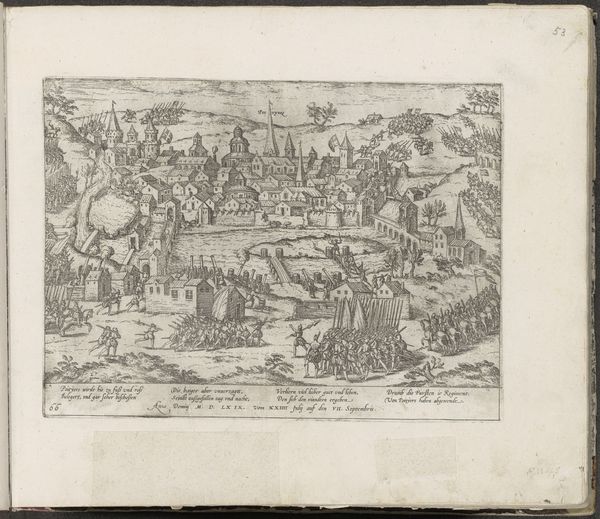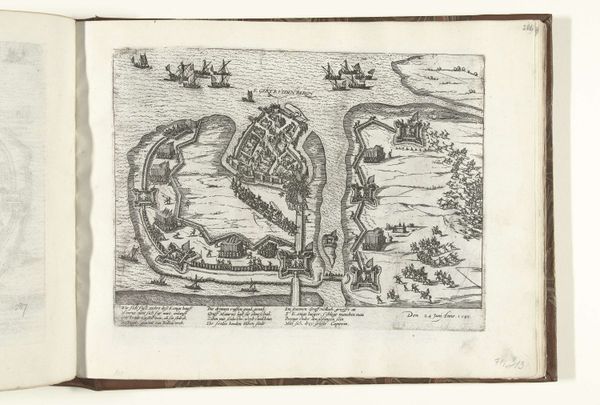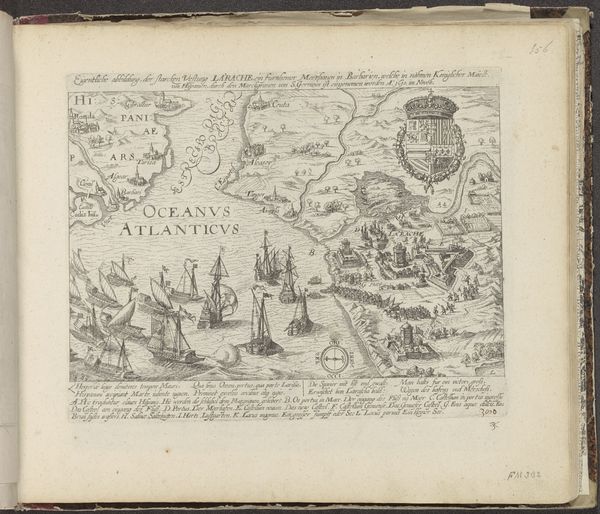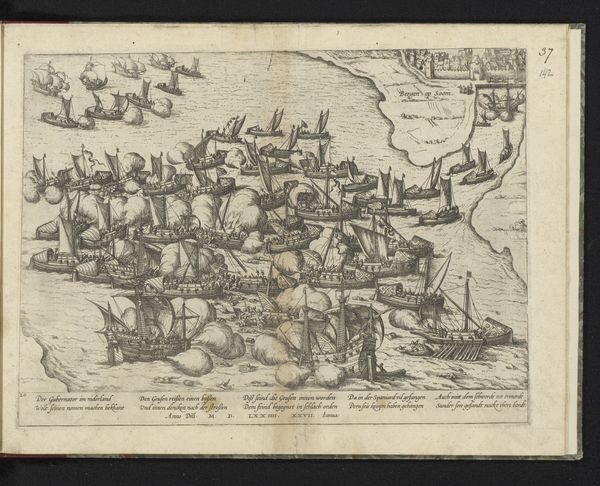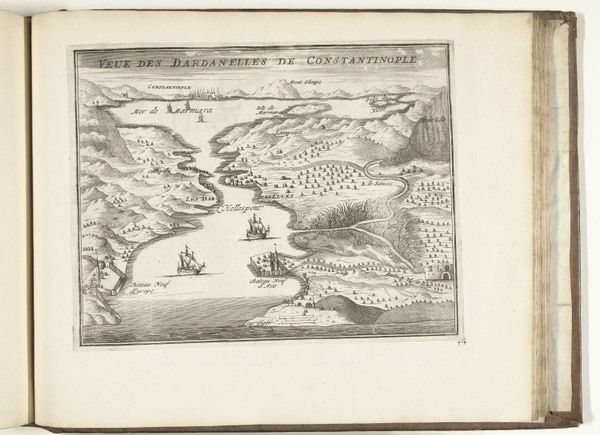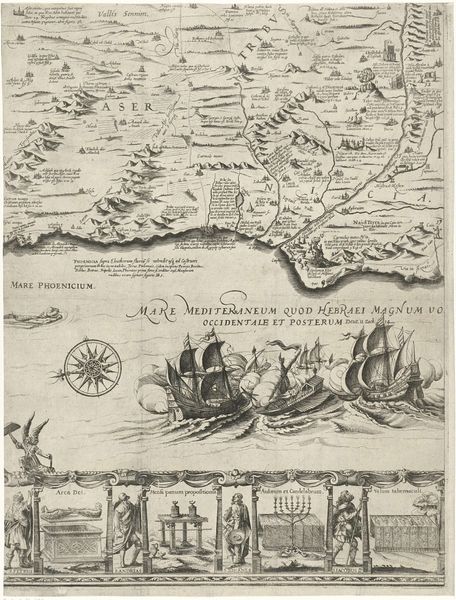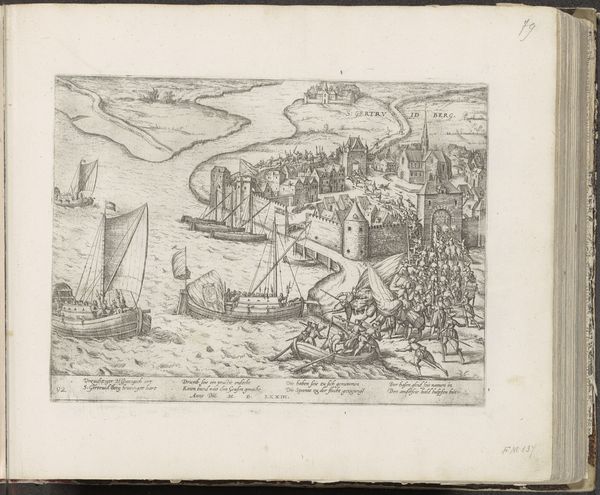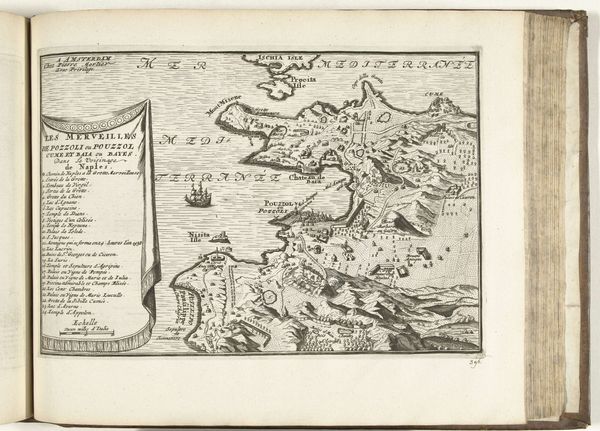
print, engraving
#
dutch-golden-age
# print
#
old engraving style
#
landscape
#
figuration
#
cityscape
#
history-painting
#
engraving
Dimensions: height 196 mm, width 282 mm
Copyright: Rijks Museum: Open Domain
Curator: Here we have an engraving by Frans Hogenberg, made sometime between 1573 and 1593, titled "Slag op de Diemerdijk, 1573," which translates to "Battle on the Diemer dyke, 1573." It’s a detailed depiction of a naval battle. Editor: It strikes me immediately as a chaotic but strangely ordered composition. The density of figures and ships crammed into this small space, the stark lines—it really conveys a sense of conflict, of intense action. The engraver certainly used very detailed textures. Curator: Indeed, the engraving style lends itself to the depiction of fine detail. Hogenberg has skillfully employed hatching and cross-hatching to create a range of tones and textures, giving depth to the scene despite the lack of color. Note how the landscape is used to enhance the representation, in the golden age style of his era. Editor: Beyond the technical skill, though, I'm drawn to what the battle itself signifies. The work portrays a critical moment during the Dutch Revolt, when the Dutch were fighting for independence from Spanish rule. It highlights themes of resistance and national identity that remain central to Dutch history and cultural identity today. Who controls representation, controls meaning. Curator: True. Consider the visual arrangement. The Dutch forces, though smaller in scale, are rendered with as much detail as the Spanish fleet, emphasizing their strength and determination. There's a visual parity there that is quite compelling, creating balance within this chaotic depiction. Editor: And those smoking cannons! The piece seems to valorize the technology of war while quietly acknowledging conflict’s messy reality. Consider what the cost to communities surrounding Diemerdijk at this time… the chaos… whose stories get elided? This battle solidified power structures that persist. Curator: It also shows a very useful bird’s eye perspective to represent naval military positioning and the territory being defended. Its lines create both chaos and this overall geometrical sensibility of representing space for analysis. Editor: Absolutely. Seeing the conflict memorialized through this lens helps us to really grasp the power and lasting impact of Dutch identity formation, as it emerged through prolonged warfare and revolt against colonial powers. It urges one to reflect critically on history's narrators, asking whose accounts and perspectives shape our contemporary view of war, freedom, and national identity. Curator: A keen reminder that understanding representation enables critical viewing. I've noticed a richer depth from our conversation. Editor: Indeed, it pushes us beyond the visual aesthetics into considering broader narratives.
Comments
No comments
Be the first to comment and join the conversation on the ultimate creative platform.
